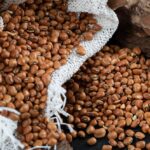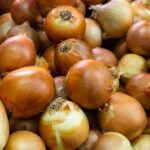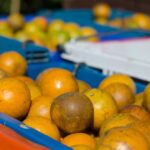Bananas are a popular and nutritious fruit that can be grown successfully in certain regions of South Africa. If you’re considering growing bananas, whether on a commercial scale or in your backyard, here are ten important things you should know:
- Climate and Region: Bananas thrive in warm tropical and subtropical climates. South Africa has suitable regions for banana cultivation, including parts of KwaZulu-Natal and Mpumalanga. Ensure that your region has a warm and frost-free climate with temperatures ranging between 25°C and 30°C throughout the year.
- Variety Selection: There are several banana varieties available, each with its unique characteristics in terms of flavor, size, and disease resistance. Popular banana varieties grown in South Africa include Cavendish, Grand Nain, and Williams. Choose a variety that suits your climate, market preferences, and production goals.
- Soil Requirements: Bananas prefer well-drained soils with good water-holding capacity. They thrive in fertile soil rich in organic matter. Conduct a soil test to determine the nutrient content and pH levels of your soil. Bananas generally prefer a pH range of 5.5 to 6.5. Amend the soil with organic matter and appropriate fertilizers based on soil test results.
- Land Preparation: Clear the land of any existing vegetation and debris. Prepare the soil by tilling and incorporating organic matter. Ensure proper drainage to prevent waterlogging, which can be detrimental to banana plants. Remove any potential hosts for pests and diseases.
- Propagation: Bananas are typically propagated vegetatively using suckers, which are the small offshoots that emerge from the base of the main plant. Select healthy, disease-free suckers with well-developed roots for planting. Plant the suckers at a slight angle, burying them deep enough to cover the entire root mass.
- Spacing: Proper spacing is essential for healthy growth and optimal fruit production. Bananas require sufficient room for their large leaves and spreading root system. The recommended spacing is typically around 2 to 3 meters between plants and 3 to 4 meters between rows. Adjust the spacing based on the variety and growth characteristics.
- Irrigation: Bananas have high water requirements and need regular and adequate irrigation. Ensure a reliable water source and implement an efficient irrigation system, such as drip irrigation or sprinklers. Monitor soil moisture levels and provide enough water to keep the soil consistently moist, but avoid waterlogging.
- Fertilization: Bananas require regular fertilization to meet their nutrient needs for vigorous growth and fruit production. Conduct a soil analysis and consult with agricultural experts to determine the appropriate fertilizer regimen. Apply balanced fertilizers with nitrogen, phosphorus, and potassium, along with micronutrients, based on the specific requirements of banana plants.
- Pest and Disease Management: Bananas are susceptible to various pests and diseases, including nematodes, weevils, and fungal infections. Implement integrated pest and disease management strategies, including regular monitoring, cultural practices, biological controls, and targeted pesticide applications when necessary. Maintain good hygiene and remove any infected plant material.
- Harvesting: Bananas are typically harvested when they reach the desired stage of ripeness. The exact time can vary depending on the variety and market requirements. Harvesting is done by cutting the bunch with a sharp knife, leaving a portion of the stem attached. Handle the harvested bunches with care to avoid bruising or damage.
By considering these ten crucial factors before growing bananas in South Africa, you’ll be better equipped to cultivate a successful banana plantation. Stay updated on local research, industry best practices, and consult with local agricultural experts for specific guidance. With proper care and attention, you can enjoy a bountiful harvest of delicious bananas from your South African plantation.







